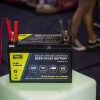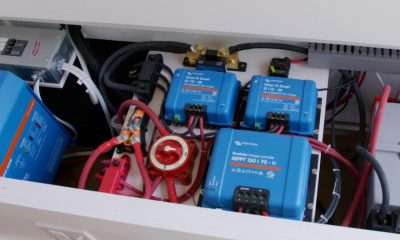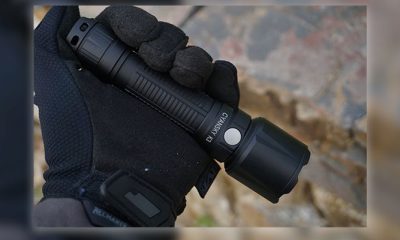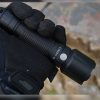Electronics
How to Choose a Headlamp
When you’re out and about in the wilderness, or simply find yourself in an area with little to no light, there’s always a risk of getting yourself in a tight spot. Whether it’s a cave, an overgrown path, or just a dark alley with no street lamps, being surrounded by pitch blackness can make anyone feel uneasy.
And sure, there are certain pieces of gear that no camper should leave home without but if you’re not exactly expecting to be out after sundown, chances are you’ll forget that all-important illumination source. Sometimes, this happens when you’re in a rush, while other times, you just don’t think of it at all. To ensure that you stay safe and can still make your way around, even when the stars have come out, you need to have multi-use and high-beam headlamps at the ready.

How Do You Choose an Appropriate Headlamp?
Not all models offer the same features for different purposes, with some options being better suited to specific activities or environments than others. Consider the intended use for your device and then compare it to the following categories:
Light Output
This is basically the power of the headlamp’s beam and is measured in lumens. It indicates the level of brightness that the device is capable of producing and the maximum output. Generally, a higher lumen rating means brighter light and greater intensity.
For the most part, an output over 50 lumens should do the trick. It doesn’t have to be top-of-the-line, as some excellent mid-range models can give you enough light for most tasks. But if you really want to explore some dark places, you may want to invest in a higher-powered headlamp that can reach up to 200 lumens or more.

Peak Beam Intensity
Next up is peak beam intensity, which is the headlamp’s ability to throw a bright beam of light in a certain direction. It’s measured in candelas (cd), which is a different metric from lumens in that it quantifies the light’s intensity in a particular direction. In other words, if lumens measure the overall amount of light in all directions, peak beam intensity measures the amount of light focused in a particular area.
This difference is particularly important for tasks such as night hiking, where you need a focused beam to see far ahead. You’ll get maximum performance from headlamps that have a rating of 1,000 cd or higher – with some models even going up to 11,000 cd.

Beam Distance
The further you can see with these lamps, the more at ease you’ll be in the dark. A headlamp’s beam distance is an indicator of how far it can project its light, as far as the human eye can see. It’s usually measured in meters and varies depending on the device.
Logically, models with higher lumens ratings should be able to project further than models with lower outputs. Depending on what you’re doing, you should consider models with an appropriate beam distance and brightness.
For instance, if you’re doing something that requires you to operate at close range, like setting up your tent or gathering firewood, then you can get away with a shorter beam distance. However, if you’re out on the trails with limited visibility, then you’ll need to go for a more powerful flashlight with a longer beam distance.

Battery and Runtime
Of course, this all comes down to the power source. The headlamps usually run on either disposable or rechargeable batteries, and they can last anywhere from 8 hours up to a massive 300 hours. The way their lifespan is measured is by calculating the amount of time it takes for them to drop by 10% from their total capacity.
It’s worth noting that the runtime is greatly affected by the brightness settings, and most brands will tell you how long it will last at different levels. Naturally, more illuminating models will have shorter runtimes than lower output devices.
When it comes to the rechargeable or disposable batteries debate, there’s no clear winner. It really depends on your situation and how much time you plan to spend outdoors. Rechargeable batteries are often more cost-effective if you plan to use this light source frequently, while disposable batteries are quite convenient if your outdoor trips are rare yet longer endeavours.

Durability and Impact Resistance
Quite expectedly, you can’t be too careful when it comes to protecting your gear in the outdoors. Whether it’s an occasional slip or an accidental drop, there’s no telling when any of us will find ourselves in a situation where we’re staring at our lamps in the mud.
Thankfully, most outdoor models are built to withstand a certain amount of shock and abuse. They’re made with durable materials such as hard plastic and aluminium, with tactile and grip-friendly surfaces. Some models even come with water-resistant certifications, which means they’ll be fully operational even after a dip in the river.
In general, the impact resistance is measured in metres and it’s tested out by having the device dropped onto a concrete surface from a specific height. Most models should be able to survive drops from up to one metre without any damage, but there are some options that can withstand drops from up to three metres.
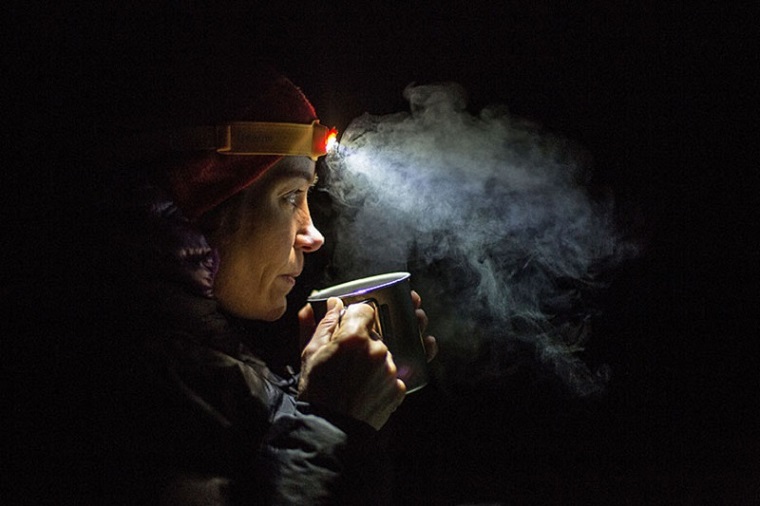
Modes and Settings
Customisation and versatility are some of the most significant traits of an illuminating device, with several models offering different modes and settings. This includes features like strobe modes, SOS signals, red lights, blue lights and even motion-sensing capabilities.
In addition, some choices come with dimmer switches which help you save energy and extend the runtime of your head lamp. You can even find models with timers, so you don’t have to worry about turning off the light manually when it’s out of reach.











